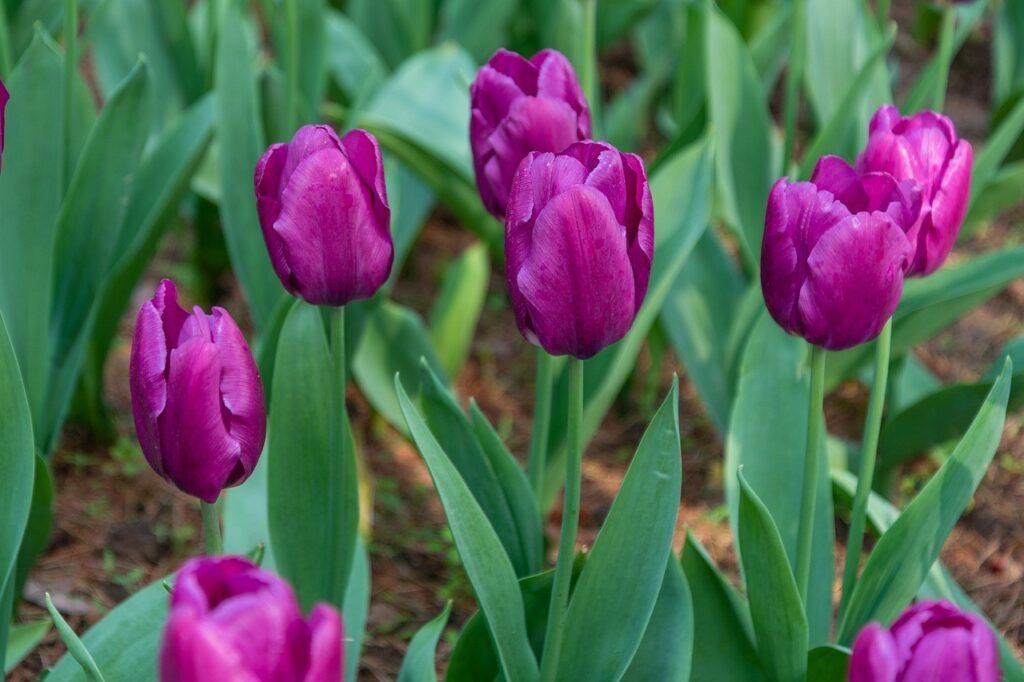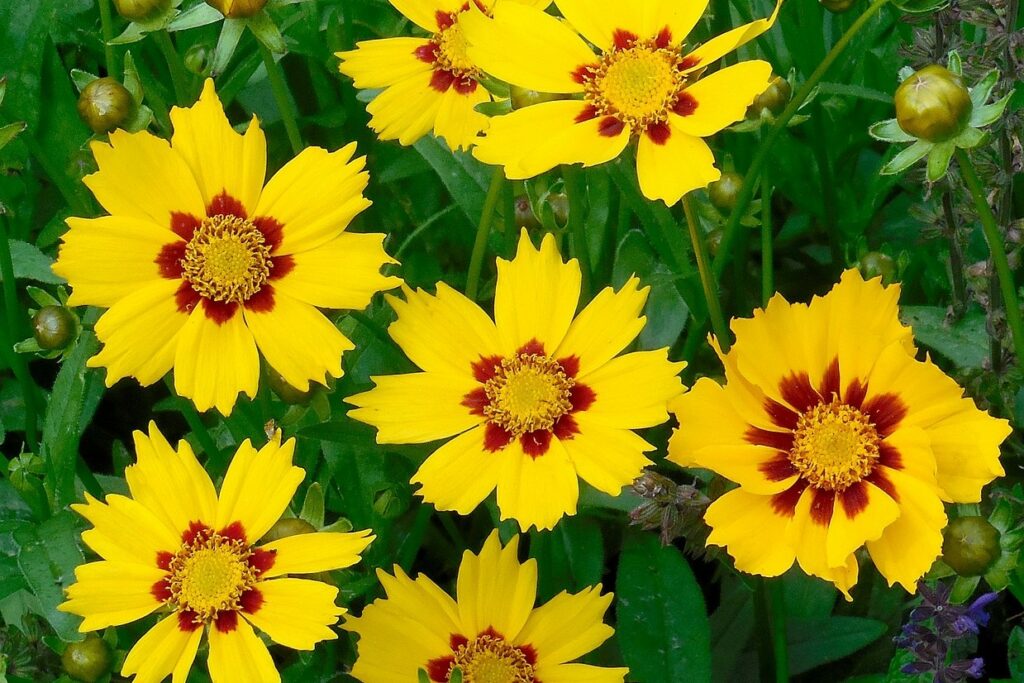How to Grow Daffodils
Daffodils are one of the easiest flowers to grow from bulbs, and tolerate a variety of conditions and soil types. Reliable bloomers, they are one of the best choices for beginners. Daffodils in Spring are a sure sign that winter is on its way out.
Types of daffodils
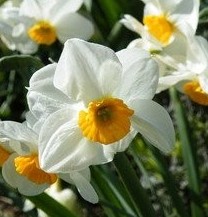
Narcissus is the botanical or scientific name of the whole genus including daffodils and jonquils. Narcissus are characterized by the shorter cup or trumpet, and daffodils are characterized by flowers with long trumpets. Some daffodil varieties have extra center petals that are layered with varying colors that give them a frilly look, for example. They can have contrasting trumpets and outer petals, and the size of individual flowers can vary greatly. Single stemmed flowers or multiple, with thousands of variations within 12 major flower types.
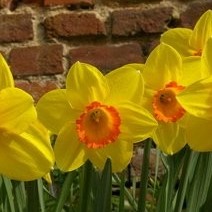
How to grow daffodils
While full sun is best, don’t discount growing daffodils in your garden if you only have partial sun conditions, as they will do fine in either. Their hardiness makes them a top candidate for various conditions and skill levels. If you fertilize, do so in the spring when the leaves are starting to come up, as they are drawing energy at this time.
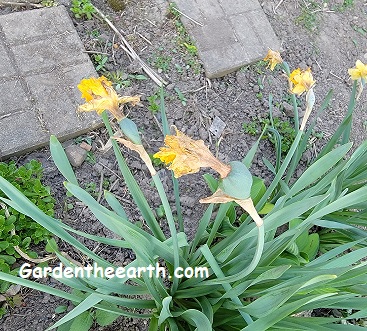
Deadhead daffodils as soon as the flowers start to fade and before the seed pod starts to form at the top. Deadheading means to remove the seed pod. These flowers have formed seed pods already and stems should have been cut before they got this large. When daffodils form seed pods, they pull energy from the plant and unless you want to collect seeds, remove the stem with the fading flower before the pods form.
Explore More: Plant These Bulbs In The Fall For Spring Flowers
How to divide daffodils
Daffodils will bloom for many years before they start to reduce flower production, which is an indicator that they would benefit from bulb division. This process will separate the offsets and multiply your bulbs. It’s a great time to expand the daffodils in your garden and share these gems with friends and family!
Ideally, allow the foliage to stay in tact until it turns brown and dies on it’s own. It will continue to draw nourishment for the bulb next year and the offsets (baby bulbs) being produced under the ground. Mark the ground so they can be located after the leaves are gone. If waiting for the leaves to die down completely is not practical , then at least wait for the leaves to start to bend and fade at about 2/3 brown.
Using a shovel or pitch fork, dig slightly larger than the size of the grouping. Once you are aware of how deep they are planted, dig deep enough to get underneath them so the roots remain in tact and the bulbs are not pierced. They will come out in clumps they have formed under ground. Dispose of any cut in half or pierced with tines.
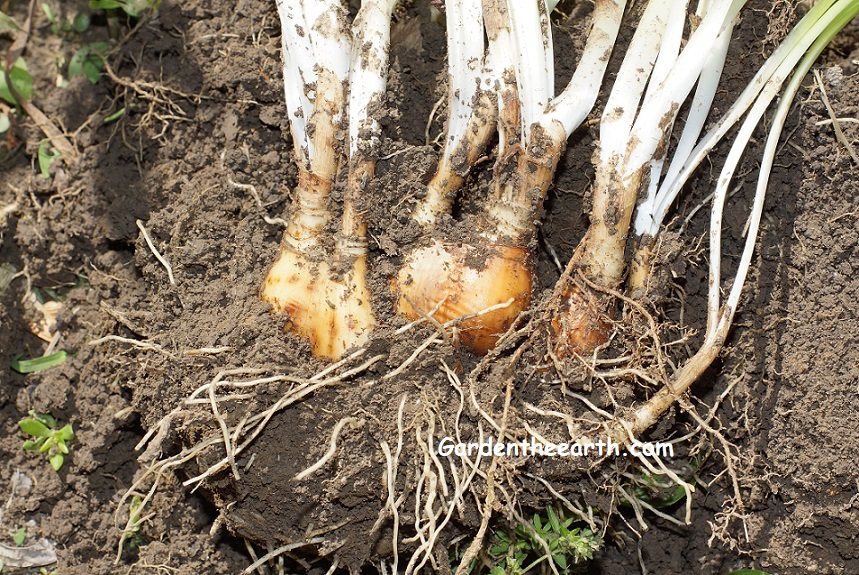
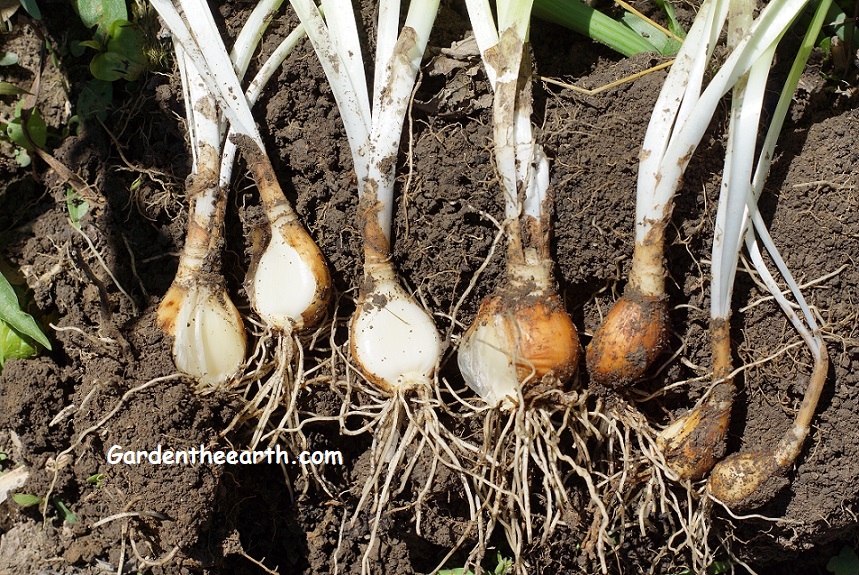
Gently separate the bulbs away from the soil and each other, taking care not to break off the roots. You may need to twist the lump of bulbs gently to separate them if the mass is dense or you have a lot of clay in your soil. Don’t force any to separate that don’t do so easily or you may not have any root system left in tact.
The brown skin will wrap around several bulbs at a time. It’s ok to break the skin so you can separate them. Gently wiggle as you pull the bulbs apart to allow the roots to untangle from each other. Leave the protective brown skin in place where it is still adhering to the bulb. It will grow over to protect the whole bulb in its own time.
Explore More: Dividing Perennials in Clay Soil – What You Need To Know
How to plant daffodils
The bulb should be positioned in the ground with the pointed side up. Ground should be loose around the root area. Plant depth according to the directions for the type you have, or about twice as deep as the height of the bulb as a general rule.
I plant my daffodils at varying depths so that they aren’t all coming up at once. This extend the blooming time with some opening as others are fading. I’ve also found that bulbs are prompted to grow in the Spring where the soil gets warmest first, so those against the house might begin growing before the ones out in the middle of the yard.
Plant in any configuration desired – rows, groups or naturalize. Plant about 2″-3″ apart from each other so they have room to produce offsets again without being crowded in short time. Cover and water.
Explore More:


